A fundamental part of the Croatian road-tripping experience is finding parking. In this article, our experts Josipa and Lidija go into detail on parking in Croatia. They also cover places you can’t or probably shouldn’t take a car.
Parking
I’m planning a Croatia road trip, what should I consider when booking my accommodation? And how is it finding parking?
Lidija: If you are renting a car, the most convenient way to go is to choose accommodation with parking. Most hotels have it, as well as a lot of apartments, our team will be happy to suggest ones with parking if needed. Sometimes the parking lot will be on the premises, other times it may be a short walk, especially if you’re staying in a pedestrianized area.
Since you’ll be driving around and need to park other places too, there are a few types of parking in Croatia:
- Parking lot with a barrier, where you need to get the ticket once you enter by pushing the button and pay based on duration when you leave by presenting the entry ticket, either to an attendant or using a machine. This is one of the best, cheapest and easiest options. As it’s metered, this is great if you’re visiting a tourist site and don’t want to guess up front how long you’ll need.

Parking lot with a barrier 
Parking machine – mostly they accept cash (local currency, both paper and coins) and credit cards.
- Another version is street parking or a small lot with payment machines where you pay in advance. You’ll recognize them by the blue signs with white P and they have an automat attached. Instructions are in English, so no problem there. You pay for as many hours you want to stay, take a ticket it will give you and put it somewhere clearly visible on the car’s dash. The problem with this is, it’s not very convenient since you need to know how much time you want to stay there in advance, which is not always the case.
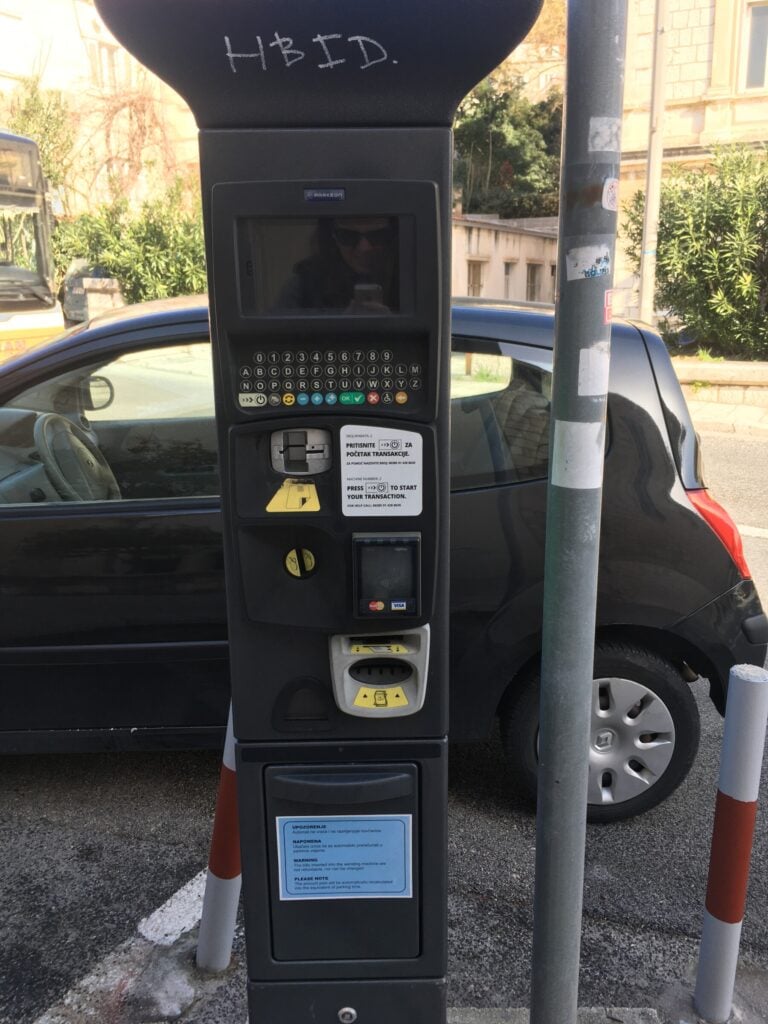
One of many different parking machines for street parking. 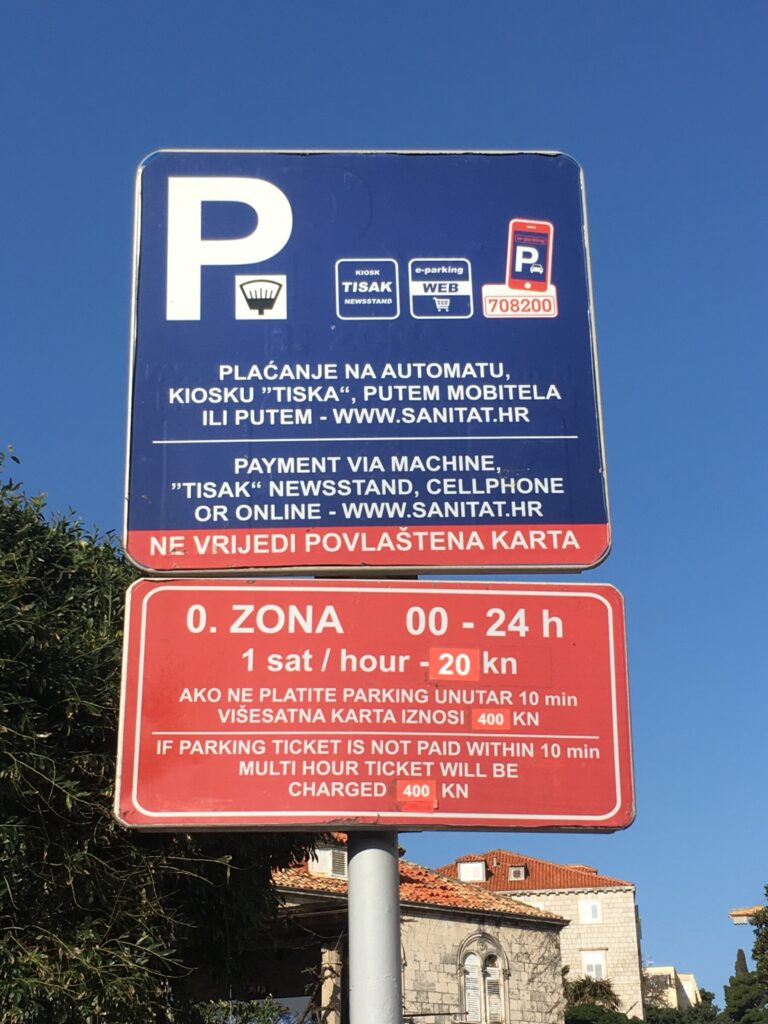
Parking sign with all payment options listed, payment duration (in this case 24/7) and cost – 20HRK for 1 hr.
- Parking garage; there are a few in bigger cities and are, of course, one of the best options. This works just like in the rest of the world and is usually staffed and with security cameras. You might find Croatia parking garages a bit narrower than you’re used to back home, so take care both while parking, and on the ramps.
- Free street parking. This exists, believe it or not, but generally only in residential areas. If you’re close to the center or in the center of a town, it certainly does not exist. Please remember this. Our city services are not always up to date with maintaining the signs but they’re definitely up to date with issuing tickets or tolling the car. A few years ago, I had clients stop in Split for an afternoon. They came back to where they parked and the car wasn’t there. After the initial shock of having the car disappear, it turns out it was tolled and taken to city parking; they had to pay a large sum to get it back. They explained where they parked and claimed there was no sign of either paid parking or forbidden parking. Based on their description, I figured exactly where they parked – this is a small street in the centre reserved for electric golf cart type cars only, and there is a sign, but it is high up and partly hidden by a lush tree. So, look around when parking. And yes, I agree that they were right here – the sign is not easily visible, but good luck explaining this to a city employee when you need to get the car. If you’re not sure if a parking place is paid for or not, better to find the one you’re sure about and avoid extra cost and fuss.
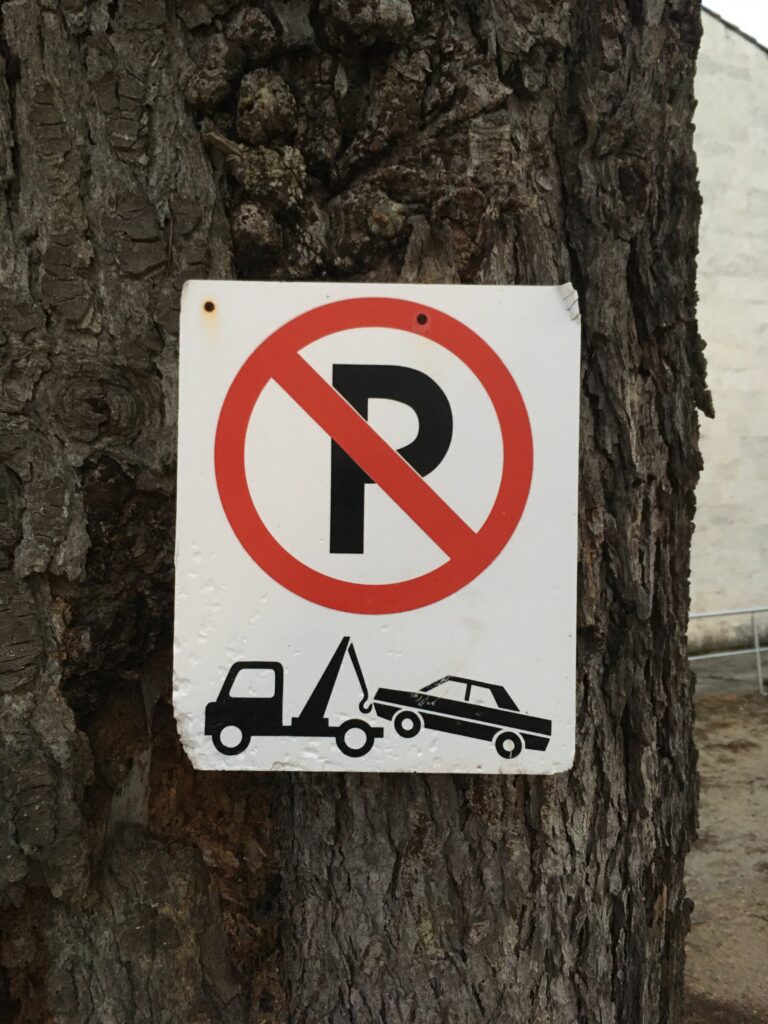
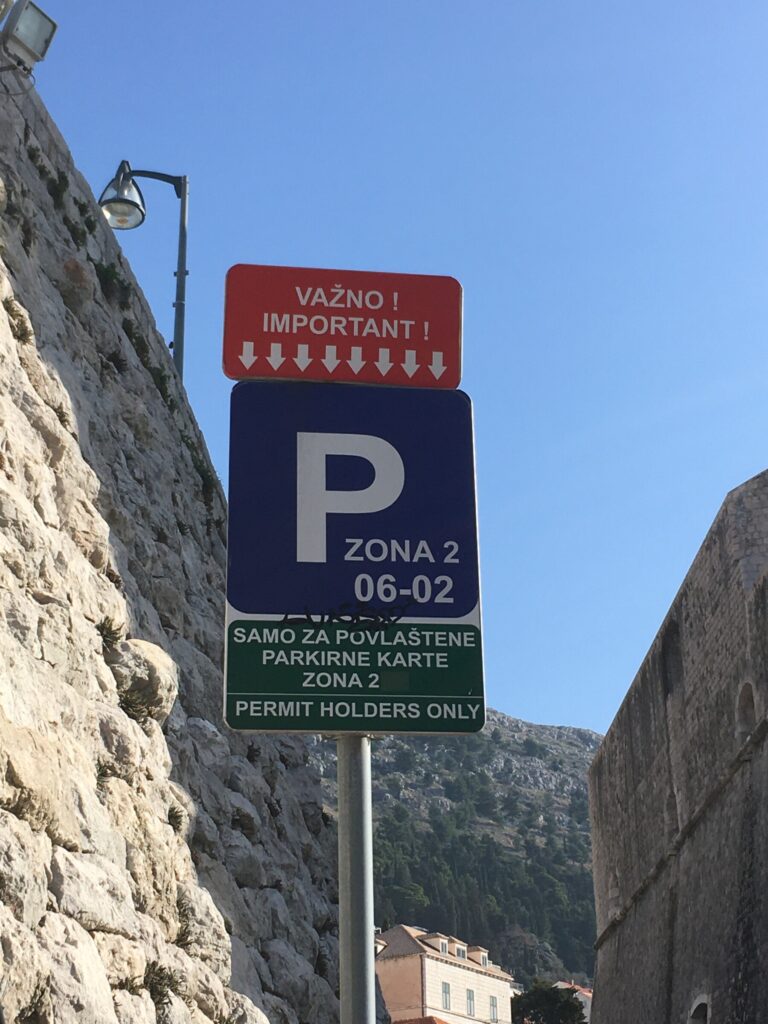
Always read the signs!
If you park in a place you should not have, 99% of the time you’ll get a ticket on your windshield and you’ll need to pay for it which is easy to do via mobile banking per example (scanning the code), or in the post office. Car towing happens rarely, only if you’re blocking the passage or similar.
Josipa: There’s one more bonus parking place I’d like to mention. You won’t see too many of them, but when you see a sign that mentions ‘Vidikovac’ that means viewpoint. If you’re looking for somewhere to take a few photos and stretch your legs, these are what you need.
Restricted Areas
Are there some cities where you can’t enter with a car? What’s the situation with parking, and getting to your hotel if you’re staying there?
Josipa: Most of Croatia’s towns have a historic city center and it is in most cases closed for cars, a pedestrian-only zone. Sometimes it is just to avoid crowds (such as in Zagreb), but most of the time it is because a car cannot pass through little narrow streets. These areas are closed off with a barrier, but even if they weren’t you’d recognise it since the road would become too narrow to pass. This is the case in Rovinj, Zadar, Sibenik, Trogir, Split and Dubrovnik.
If you are making a stop in one of these towns, all of them have a public parking facility near the pedestrian zone, basically just next to it. It will be either a parking lot with a barrier or parking garage, so it’s easy to use, you’ll park there and just walk to the old town.
If you are staying in one of these cities in the pedestrian zone, there are two possible scenarios:
- Your hotel does not have a parking space (this is rarely the case): Again, you’ll find a parking space in one of the parking lots near the pedestrian zone. Once you’re done, all you need to do is give a call to your local representative or the hotel and somebody will come to meet you and take you to the hotel (and help with your luggage)
- Your hotel has a parking space: This will be reserved in advance for you and a hotel representative will meet you there once you arrive, show you where to park (if necessary) and take you to your hotel. Most pedestrian zone hotels have reserved parking spaces outside of the no-car zone, and your local JayWay contact will give you precise instructions on how to get there, so no worries here.

Restricted residents area. 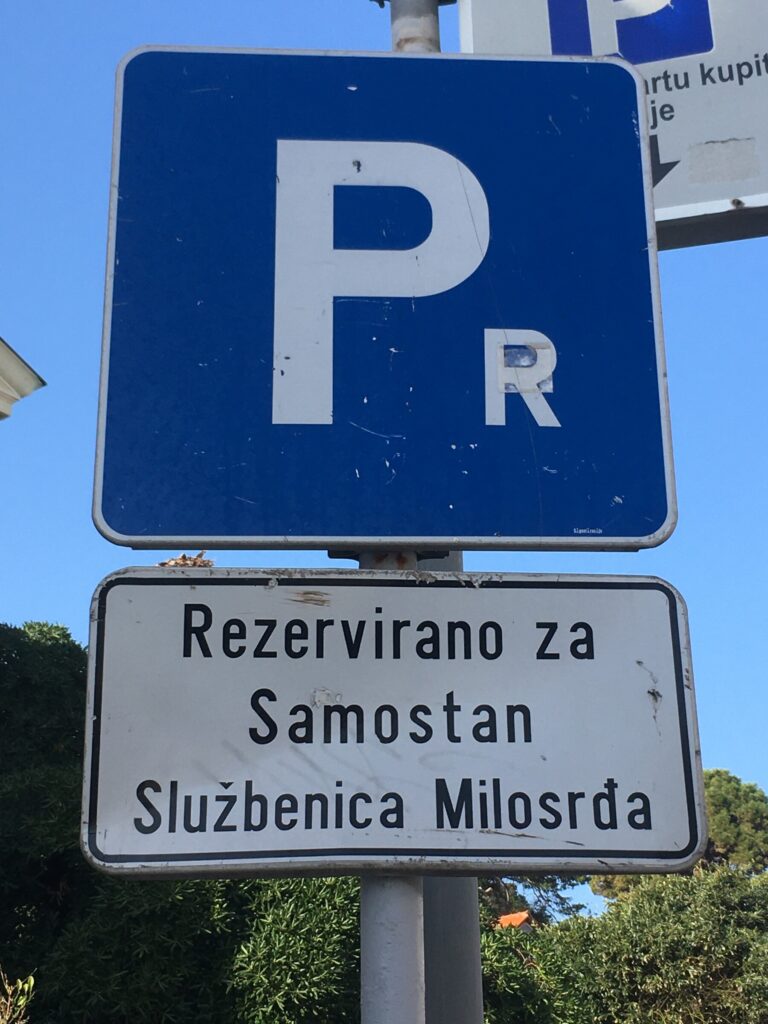
The R letter is warning us that the parking spot next to this sign is reserved and it is pre-paid parking where you might get fined or towed!
Where are some places I definitely don’t need a car?
Lidija: One of the best parts of living in Croatia is the fact that no matter where you live, everything is more or less within walking distance. By far our biggest city is Zagreb and it has less than a million people. The second biggest is Split, with around 200,000, everything else is considerably smaller. This means that we don’t need to use cars every day and can walk to most places. This is especially true for our guests; you’ll have central accommodation – our cities are situated around a historical center which will be within walking distance, just like most of the major sights, including beaches in coastal cities. There is also a public transportation system, as well as Uber, Bolt, and taxis. Each is a better option than having a car for a few days in the city. Why? Well, all of these cities were built before the discovery of a car. Lots of them during Roman and Ancient Greek times. This means a great historical vibe, but also a great frustration and great payment when trying to park. You will literally lose more time trying to park the car than to walk somewhere and will pay more for parking than you paid for the rental. Don’t believe me? Parking in Dubrovnik is $12 per hour!
Despite common sense, a lot of locals like to take their cars out for a walk and this, paired with a lot of European visitors with their cars, creates a mess, especially close to the city center. Looking at people shout through open windows and wave their hands can be a charming representation of Mediterranean temperament, but not when you’re in one of those cars.
Having a car is great for exploring little hidden gems along the way between destinations and enjoying at your own pace, but if you’re spending a few days in a city, drop it off, you won’t need it – or want it, trust me on this.
Read our post about driving on islands for our advice on whether you should take your rental car there.